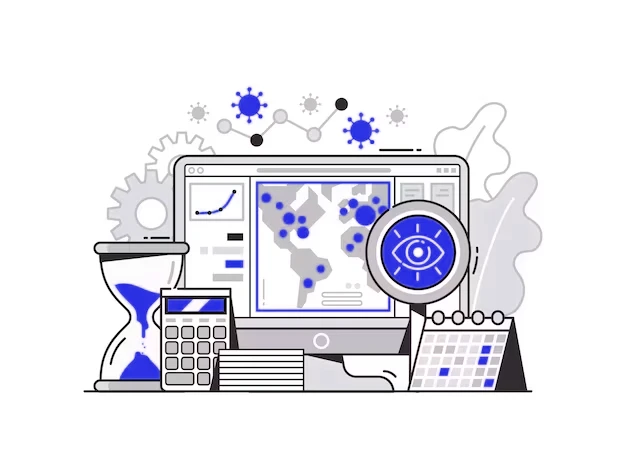In today’s digital age, websites have become an integral part of our lives. We use them for information, entertainment, shopping, and much more. But just like physical spaces, websites can also get infected with viruses. These digital infections can compromise your security and the functionality of your site. So, how do you check a website for viruses and, more importantly, how do you remove them?

Fortunately, the sooner you detect a virus attack on your website, the less damage there may be.
In this comprehensive guide, we’ll explore the world of website viruses and provide you with practical steps to identify, remove, and safeguard your website against these digital threats.
What Are Website Viruses?
Let’s start with the basics. Just like your computer or smartphone can get infected with viruses, so can your website. Website viruses are malicious software programs that infiltrate your site’s code and can perform various harmful activities. These activities might include stealing user data, injecting spammy links, or even defacing your site. Think of them as the digital equivalent of germs that can make your website sick.
Why Should You Be Bothered?
You might be wondering, why should you be concerned about website viruses? Well, here’s the thing – an infected website can lead to a host of problems. First and foremost, it can damage your website’s reputation. Visitors may see security warnings or encounter malicious content, leading them to distrust your site. This can result in a loss of traffic and revenue. Additionally, infected websites can harm your SEO rankings, as search engines tend to penalize sites with security issues.
Signs Your Website Might Be Infected
Now that you understand the importance of addressing website viruses, let’s explore some signs that your website might be infected. Recognizing these signs early can help you take action promptly. Here are some red flags to watch out for:
- Unexpected Changes: If you notice unauthorized changes to your website’s appearance or content, it could be a sign of an infection.
- Slow Performance: A sudden drop in your website’s speed and performance can be indicative of malware eating up your resources.
- Unwanted Pop-Ups: Pop-up ads or content that you didn’t create appearing on your website is a clear sign of an issue.
- Strange Error Messages: If your visitors start seeing unusual error messages, it’s time to investigate.
- Traffic Drop: A significant decrease in website traffic without any apparent reason could be linked to security concerns.
What Damage Can Viruses Do to Your Website?
Malware attacks can seriously harm your website and have negative repercussions.
Viruses can Harm Your Website in the following ways:
- People are hesitant to view a website full of problems, improper content, or other suspicious activity.
- Get blacklisted and marked as hazardous to users if search engines and browsers block your hacked site.
- If hackers gain access to your website’s login information, you risk losing control of it since they might alter both the passwords and the website’s general content.
- Affect your reputation – if sensitive information, such as the personal information of your customers, is released or misused, it can be challenging to repair it.
How to Check Your Website for Viruses
Now that you’re aware of the potential signs of an infection, let’s move on to the critical part: how to check your website for viruses. Fortunately, there are several methods and tools available for this purpose. Here’s a step-by-step guide to get you started:
- Manual Inspection: Begin by thoroughly reviewing your website’s content and code. Look for any suspicious links, files, or scripts.
- Use Online Scanners: Many online tools and services can scan your website for malware and vulnerabilities. Some popular ones include Sucuri, SiteLock, and VirusTotal.
- Regular Updates: Keep your website’s CMS (Content Management System), plugins, and themes up to date. Often, outdated software is more vulnerable to attacks.
- Security Plugins: Consider installing security plugins that can automatically scan and protect your site. Options like Wordfence and Sucuri Security are widely used.
- Web Hosting Security: Opt for a reputable web hosting provider with robust security measures in place.
By following these steps, you’ll be well on your way to ensuring your website is virus-free and secure for your visitors.

The Most Common Viruses Found on Websites
There are many different kinds of website viruses out there, but you’ll typically run across one of the following. SQL Injection. Malicious code is injected into a web application in SQL injection attacks.
There are many different kinds of website viruses out there, but you’ll typically run across one of the following.
1. SQL Injection.
Malicious code is injected into a web application in SQL injection attacks. Attackers can then examine your data and make changes to it, changing the content or behavior.
Forms for signing up or logging in, contact forms, and feedback areas are frequently used entry points for assaults. Attackers may provide you dangerous software in place of information you request from visitors, such as a login, password, or phone number.
2. Trojans
Malware known as a “trojan horse” sneaks onto your website by pretending to be a trustworthy application. In an email attachment or downloaded file, this infection may be concealed. The dangerous program can be used to get backdoor access, monitor visitor activities, and steal sensitive data once it has been installed on your machine.
You might have a trojan virus infection if you see odd activity on your website, such as settings being modified without warning.
3. Local File Inclusion (LFI)
A web application is deceived into running or exposing files on a web server by using Local File Inclusion (LFI).
LFI attacks have the potential to expose sensitive data about your website and how it is configured, and they even have the potential to grant hackers administrator access. If you allow user file uploads to your servers, your website is more exposed to LFI.
4. Cross-Site Scripting
When malicious code is inserted into a website that appears secure, an issue known as cross-site scripting (XSS) results. A browser-side script containing malicious code is transmitted by an attacker. The user’s browser will execute the script since it is trusted.
Cookies, session tokens, and other sensitive information in the browser may be exposed via XSS attacks. In extreme circumstances, XSS attacks have even been known to change HTML page content.
5. Macro Viruses
A computer virus known as a macro virus is one that is written in the same macro language as software applications. It can infect any computer since it focuses on software applications rather than operating systems (OS), regardless of whether it runs Windows, macOS, or Linux.
By inserting their code into the macros linked to data files from word-processing tools, such as documents or spreadsheets, macro viruses infect computers. They might be obtained from emails that have documents attached to them or by clicking on a phishing link.
Popular Website Virus Scanners
To make your job easier, here are some popular website virus scanners that you can rely on:
- Sucuri: Sucuri is a trusted name in website security. Their scanner can identify malware and help you clean your site.
- SiteLock: SiteLock offers comprehensive website security solutions, including scanning for malware and vulnerabilities.
- VirusTotal: VirusTotal is a free online service that scans files and URLs for viruses. It’s a quick and easy way to check specific elements of your website.
- Wordfence: If you’re using WordPress, Wordfence is a highly recommended security plugin. It not only scans your site but also provides a firewall to block malicious traffic.
Steps to Remove Website Viruses
So, what should you do if you discover that your website is infected with a virus? Don’t panic; there are steps you can take to remove the threat and restore your site’s health:
- Isolate and Backup: First, isolate the infected site to prevent further damage. Then, create a backup of your website’s content and database.
- Identify the Virus: Determine the type of virus or malware affecting your site. This will help you choose the appropriate removal method.
- Remove Malicious Code: Access your website’s files and remove any malicious code or infected files. Be thorough and make sure nothing suspicious remains.
- Update and Patch: Update your CMS, plugins, and themes to their latest versions. This will patch known vulnerabilities.
- Change Passwords: Change all passwords associated with your website, including FTP, database, and admin passwords.
- Scan Again: After removal, run another virus scan to ensure your website is clean.
- Request Review: If your website was blacklisted by search engines, request a review to remove the blacklist status.
Read also:
- Free Dating Apps in Nigeria to Find Love or Hookups
- Social Media Marketing Hacks for Nigerian Startups
- The 10 Best Free Email Marketing Tools In 2023
Protecting Your Website from Future Infections
Prevention is always better than cure. To protect your website from future infections, consider the following measures:
- Regular Backups: Schedule regular backups of your website’s content and database, so you can quickly restore it in case of an attack.
- Security Plugins: Invest in a reputable security plugin that offers real-time monitoring and protection.
- Strong Passwords: Enforce strong password policies for all users and regularly update them.
- Firewall: Use a web application firewall (WAF) to filter out malicious traffic before it reaches your website.
- Stay Informed: Keep up-to-date with the latest security threats and best practices to stay one step ahead of potential attackers.
Frequently Asked Questions (FAQs)
1. What types of viruses can infect a website?
Website viruses can come in various forms, including malware, spyware, adware, and ransomware. Each type has its own set of malicious activities.
2. Can website viruses steal personal information?
It’s true that some website viruses are made specifically to steal users’ sensitive and personal data, including credit card numbers and login information.
3. How often should I scan my website for viruses?
You should regularly, ideally once a week, examine your website for infections. Run a scan as well after making big site upgrades or modifications.
4. Is there a difference between malware and viruses?
Yes, there is a difference. In addition to viruses, spyware, adware, and Trojans are also included under the umbrella term “malware,” which is a general word for malicious software. One particular kind of malware is a virus.
5. What should I do if my website gets blacklisted?
If search engines ban your website, take quick action to secure and clean it up. Request a review from the search engine after the malware has been removed to get the blacklist status removed.
Keeping your website virus-free is crucial for both its functionality and the confidence of your visitors. Regular scans, prompt upgrades, and a proactive security strategy can all help to keep your website a trusted and secure online destination.